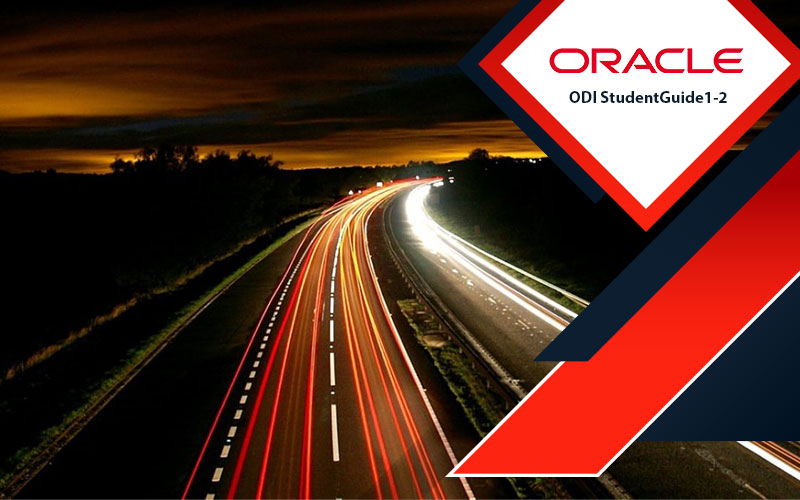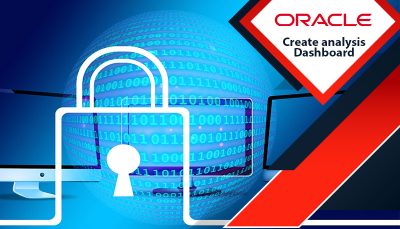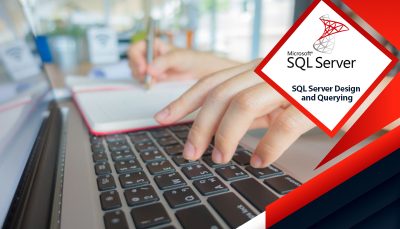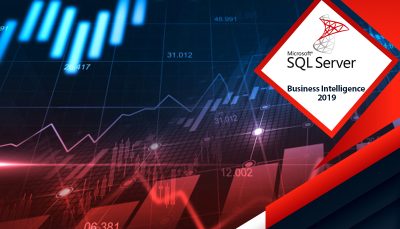
شرح دوره ODI StudentGuide1-2
دانشجویان بعد از پایان دوره ODI StudentGuide1-2 یاد میگیرند:
از Oracle Data Integrator برای انجام تیدیل دادهها در میان پلت فرمهای مختلف استفاده کنید
از نقشههای ODI، روشها و بستهها برای انجام انجام تبدیلات داده ELT طراحی کنید
مدیریت منابع ODI و تنظیم امنیت در ODI را انجام دهید
یکپارچهسازی دادهها و تبدیل در میان پلت فرمهای مختلف را انجام دهید
از رابط گرافیکی ODIبرای تعریف رویهها، بستهها و کارهای ELT استفاده کنید
یک محیط امن و چند کاربره ODI را تنظیم و نگهداری کنید
با استفاده از ODI پیاده سازی CDC را انجام دهید
پیشنیاز دوره ODI StudentGuide1-2
دوره ODI StudentGuide1-2 پیش نیازی ندارد.
مخاطبین دوره ODI StudentGuide1-2
تحلیلگران کسب و کار
مدلسازان داده
مدیر انبار داده
مدیران پایگاه داده
مشاور فنی
مزایای دوره ODI StudentGuide1-2
- ارائه مدرک معتبر
- برگزاری دوره ها بصورت کاملا عملی
- استفاده از لابراتور مجهز
- استفاده از برترین اساتید داخلی و با مدرک بینالمللی
- با توجه به حضور گروه دوران در بیش از 1000 پروژه سازمانی، امکان معرفی دانشجویان دوره به بازار کار مرتبط به دورهها
- تخفیف جهت حضور در دورههای بعدی
- دريافت مدرک بينالمللی مرتبط
سرفصل دوره ODI StudentGuide1-2
Introduction to Integration and Administration
o Course Objectives
o Lesson Objectives
o Agenda
o Why Oracle Data Integrator?
o Conventional Integration Process: ETL
o Extract Load Transform (E-LT)
o ODI Architecture and Components
o ODI Architecture
o ODI Components: Overview
o Using ODI Studio
o Designer Navigator (Work Repository)
o Operator Navigator (Work Repository)
o Topology Navigator (Master Repository)
o Security Navigator (Master Repository)
o What Is an Agent?
o ODI Agents
o Three Types of Agents: Java EE, Standalone, Collocated Standalone
o Using the Three Types of Agents
o Standalone Agent: Example
o ODI Console
o Enterprise Manager FMW Console
o Management Pack for ODI for Enterprise Manager Cloud Control
o Management Pack for ODI for EM CC ODI Home Page
o Agenda
o ODI Repositories
o Master and Work Repositories
o Repository Setup: Example
o Repository Setup: Multiple Master Repositories
o Components: Global View
o Possible ODI Methodology
o Checklist of Practice Activities
o Starting Oracle Data Integrator
o Using Online Help
o Summary
Administering ODI Repositories
o Objectives
o Agenda
o Initial Repository Administration Tasks
o Steps to Set Up ODI Repositories
o 1.Run Repository Creation Utility
o 1a. Create Schemas
o 1b. Create Passwords and Tablespaces
o 2. Connect to the Master/Work Repository
o 3. Create a Wallet
o Connecting to the Master/Work Repository
o Exporting the Master Repository
o Importing the Master Repository
o Creating a Work Repository
o Changing the Work Repository Password
o Quiz
o Summary
o Checklist of Practice Activities
o Practice 2-1: Creating and Connecting to ODI Master and Work Repositories
ODI Topology Concepts
o Objectives
o Agenda
o What Is Topology?
o What Is in the Topology?
o Agenda
o What Is a Data Server?
o Data Servers: Examples
o Important Guideline 1
o What Is a Physical Schema?
o Physical Schemas: Properties
o Technology Terminology Among Vendors
o Important Guideline 2
o Agenda
o Infrastructure for Two Production Sites: Example
o ODI Design: Physical Architecture of the Two Production Sites
o Logical Schemas and Contexts
o What Is a Logical Schema?
o Important Guideline 3
o Logical Versus Physical Architecture
o Design Time Versus Run Time
o What Is a Context?
o A Context Maps a Logical to a Physical Schema
o Defining Contexts
o Mapping Logical and Physical Resources
o Agenda
o ODI Physical Agents
o Creating a Physical Agent
o ODI Agent Parameters
o Launching a Stand-Alone Agent: Examples
o Stopping the ODI Agent
o Deploying and Configuring a Java EE Agent
o Load Balancing: Example
o Important Guideline 5
o Infrastructure with Agents: Example
o Defining Agents: Example
o Special Case: Fragmentation Problem
o Special Case: Important Guideline 6
o Special Case: Defining the Physical Architecture
o Special Case: The Infrastructure
o Special Case: Physical Architecture in ODI
o Agenda
o Planning the Topology
o Matrix of Logical and Physical Mappings
o Summary
Describing the Physical and Logical Architecture
o Objectives
o Agenda
o What Topology Navigator Contains
o Topology Navigator: Overview
o Review: Context Connects Logical to Physical
o Objects You Create in the Practice
o Defining a Context
o Agenda
o Physical Architecture View
o Prerequisites for Connecting to a Server
o Important Note
o Creating a Data Server
o Creating a Data Server: JDBC
o JDBC Driver
o JDBC URL
o Creating a Data Server: JNDI
o Testing a Data Server Connection
o Creating a Physical Schema
o Agenda
o Logical Architecture and Context Views
o Creating a Logical Schema
o Creating a Logical Agent
o Editing a Context to Link Logical and Physical Agents
o Summary
Setting Up a New ODI Project
o Objectives
o Agenda
o What Is a Project?
o Oracle Data Integrator Projects: Overview
o How to Use ODI Projects in Your Work
o Creating a New Project
o Agenda
o What Is a Folder?
o Creating a New Folder
o Organizing Projects and Folders
o Agenda
o What Is a Knowledge Module?
o Types of Knowledge Modules
o Which Knowledge Modules Are Needed?
o Knowledge Modules: Examples
o Importing Knowledge Modules
o Replacing Existing KMs
o Knowledge Module Editor
o Editing a Knowledge Module
o Agenda
o Exporting and Importing
o Exporting an Object
o Importing an Object
o ID Numbers: Overview
o Import Types
o Choosing the Import Mode
o Import Report
o Agenda
o What Is a Marker?
o Tagging Objects with Markers
o Removing Markers
o Marker Groups
o Project and Global Markers
o Creating a Marker Group
o Summary
Oracle Data Integrator Model Concepts
o Objectives
o What Is a Model?
o Agenda
o Relational Model
o Relational Model: Tables and Columns
o Relational Model: Keys
o Relational Model: Foreign Keys
o Relational Model: Constraints
o Relational Model: Indexes
o Relational Model Support in ODI
o Additional Metadata in ODI
o Flex Fields
o Agenda
o What Is Reverse-Engineering?
o Methods for DBMS Reverse-Engineering
o Other Methods for Reverse-Engineering
o Standard Versus Customized Reverse-Engineering
o Reverse-Engineering Life Cycle
o Agenda
o Creating a Model by Reverse-Engineering
o Step 1: Creating and Naming a New Model
o Note: Creating and Naming a New Model
o Step 2: Defining a Reverse-Engineering Strategy
o Step 3: Starting the Reverse-Engineering Process
o Using RKM for Customized Reverse-Engineering
o Selective Reverse-Engineering
o Step 4: Fleshing Out Models
o Shortcuts
o Smart Export and Import
o Summary
Organizing ODI Models and Creating ODI Datastores
o Objectives
o Agenda
o What Is a Model Folder?
o Creating a Model Folder
o What Is a Submodel?
o Creating a Submodel
o Organizing Datastores into Submodels
o Setting Up Automatic Distribution
o Agenda
o Creating Datastores
o Creating a Datastore in a Model
o Adding Columns to a Datastore
o Agenda
o What Is a Constraint in ODI?
o Constraints in ODI
o Creating a Mandatory Column
o Agenda
o Creating a Key
o Checking a Key
o Creating a Reference
o Creating a Simple Reference
o Creating a Complex Reference
o Checking a Reference
o Agenda
o Creating a Condition
o Checking a Condition
o Agenda
o Audit/Explore: When and Why
o Audit/Explore Process: Overview
o Agenda
o Displaying the Contents of a Datastore
o Viewing the Distribution of Values
o Analyzing the Contents of a Datastore
o Agenda
o Defining Business Rules in ODI
o From Business Rules to Constraints
o Deducing Constraints from Data Analysis
o Testing a Constraint
o Auditing a Model or Datastore
o Reviewing Erroneous Records
o Summary
ODI Mapping Concepts
o Objectives
o Agenda
o What Is a Mapping?
o Business Rules for Mappings
o Where Are the Rules Defined?
o Agenda
o What Is an Expression?
o What Is a Join?
o What Is a Filter?
o What Is a Lookup?
o What Is a Set?
o What Are Some of the Others?
o New with Patch: Pivot and Unpivot
o Agenda
o How Does ODI Implement Business Rules?
o Business Problem
o Implementing the Rules
o Integration Process
o Process Details
o Process Implementation: Example
o Process Implementation: Example
o Process Implementation: Example
o Agenda
o What Is the Staging Area?
o Execution Location
o Agenda
o From Business Rules to Processes
o Knowledge Modules
o What Is a Knowledge Module?
o Code Generation
o KM Types Used in Mappings
o Agenda
o Purpose of a Mapping
o What Is an Expression?
o Creating a One-to-One Mapping
o Creating and Naming a Mapping
o Defining the Target Datastore
o Multiple Targets
o Defining the Source Datastore
o Connecting the Ports to Make the Map
o Defining the Expressions
o Valid Expression Types
o Saving the Mapping
o Running the Mapping
o Summary
Designing Mappings
o Objectives
o Agenda
o Multiple-Source Datastores
o Creating a Join Manually
o Advanced Joins
o Types of Joins
o Setting Up a Join
o Creating Lookups
o Using Lookups
o Agenda
o Filters in ODI
o Defining a Filter Manually
o Setting Up a Filter
o Agenda
o Physical Mapping Diagram
o Flow in the Physical Diagram
o What Defines the Flow?
o Scenario
o Basic Process
o Agenda
o Purpose of a Staging Area
o Placing the Staging Area
o Important Note
o Specifying the Staging Area
o Agenda
o Options for Expressions
o Setting Options for Expressions
o Disabling an Expression
o Enabling a Mapping for Inserts or Updates
o Agenda
o Execution Location and Syntax
o Why Change the Execution Location?
o Changing the Execution Location
o ODI Mapping Execution Simulation
o Agenda
o Which KMs for Which Flow?
o Knowledge Modules: Additional Information
o Identifying IKMs and LKMs
o IKMs and LKMs: Strategies and Methods
o Specifying an LKM
o Specifying an IKM
o Common KM Options
o Flow: Example 1
o Flow: Example 2
o Flow: Example 3
o Summary
Mappings: Monitoring and Troubleshooting
o Objectives
o Agenda
o Operator Navigator: Viewing the Log
o Using Operator Navigator
o Hierarchy: Sessions, Steps, Tasks
o Viewing Details of Sessions, Steps, and Tasks
o Monitoring Execution of an Mapping
o Troubleshooting a Session
o Identifying the Error
o Reviewing the Code
o Fixing the Code and Restarting the Session
o Fixing the Mapping
o Keys to Reviewing the Generated Code
o Agenda
o Common Errors and Symptoms
o Important Note
o Tips for Preventing Errors
o Using Attribute Panel for Quick Edits
o Summary
Designing Mappings: Advanced Topics 1
o Objectives
o Agenda
o Business Rules in Mappings
o Business Rule Elements
o More Elements
o Expression Editor
o Agenda
o Using a Variable in Code
o Binding Versus Substitution
o Case Sensitivity
o Agenda
o Defining a Dataset
o Using Set-Based Operators
o Example of SET: UNION
o Agenda
o Types of Sequences
o Support for Native Sequences
o Creating a Native Sequence
o Referring to Sequences
o Note: Sequences Updated by Agent
o Using Standard Sequences in Mappings Correctly
o Using ODI Standard Sequences in Mappings
o Populating Native Identity Attributes
o Sequences: Best Practices
o Automatic Temporary Index Management
o Tracking Variables and Sequences
o How Variable and Sequence Tracking Works
o Variable Actions
o Definition Tab of Session Step or Session Task
o Summary
Designing Mappings: Advanced Topics 2
o Objectives
o Agenda
o Partitioning
o Definition in Datastore After Reverse-Engineering
o Using Partitioning in a Mapping
o Agenda
o Reusable Mappings
o Using Reusable Mappings: Example
o Derived Select (Subselect) for Reusable Mappings
o Agenda
o What Is a User Function?
o Why Use User Functions?
o Properties of User Functions
o Using User Functions
o Creating a User Function
o Defining an Implementation
o Syntax and Implementations
o User Functions at Design Time
o User Functions at Run Time
o Note: Functions in Execution Log
o Agenda
o Using Substitution Methods
o Substitution Methods: Examples
o Agenda
o Description of KM Steps
o Details of the Steps
o Setting KM Options
o Developing Your Own KM: Guidelines
o Complex File Technology
o Summary
Using ODI Procedures
o Objectives
o Agenda
o What Is a Procedure?
o Procedure: Examples
o Creating Procedures: Overview
o Agenda
o Creating a New Procedure
o Agenda
o Creating a Command
o Arranging Tasks in Order
o Which Parameters Should Be Set?
o Valid Types of Commands
o More Elements
o Why Use a Source Command?
o Agenda
o Types of Options
o Creating a New Option
o Making a Command Optional
o Using an Option Value in a Command
o Agenda
o Procedure Execution
o Using the Operator Navigator to View Results
o Summary
Using ODI Packages
o Objectives
o Agenda
o What Is a Package?
o Creating a Package
o Agenda
o Creating and Naming a Package
o Package Diagram
o Package Diagram Toolbar
o Agenda
o Package Steps
o Creating a Package Step
o What Is an ODI Tool?
o Creating an ODI Tool Step
o Tool Steps: Best Practices
o Agenda
o Sequencing Steps
o A Simple Package
o Sequencing Package Steps
o Agenda
o Executing a Package
o Agenda
o Basic Step Types
o Advanced Step Types
o Agenda
o Creating Model, Submodel, and Datastore Steps
o Models, Submodels, and Datastore Steps
o Agenda
o Creating a Variable Step
o Variable Steps
o Agenda
o Controlling Execution
o Error Handling
o Creating a Loop
o The Advanced Tab
o Summary
Step-by-Step Debugger
o Objectives
o Agenda
o Overview
o Agenda
o Process Overview
o Starting a Session in Debug mode
o Specifying Debug Properties
o Control Execution Flow
o Screen Step Numbering
o Agenda
o New Functionalities
o Benefits for End Users
o Agenda
o Debug Toolbar
o Toolbar: Current Cursor
o Toolbar: Get Data
o Toolbar: Step Into
o Toolbar: Run to Task End
o Toolbar: Run to Next Task
o Toolbar: Run to Step End
o Toolbar: Run to Next Step
o Toolbar: Pause
o Toolbar: Resume
o Summary
Managing ODI Scenarios
o Objectives
o Agenda
o What Is a Scenario?
o Properties of Scenarios
o Agenda
o Scenario-Related Tasks
o Generating a Scenario
o Regenerating a Scenario
o Generation Versus Regeneration
o Executing a Scenario from the GUI
o Executing a Scenario from a Command Line
o Executing a Scenario from a Package
o Exporting a Scenario
o Agenda
o Preparing Scenarios for Deployment
o Automating Scenario Management
o Scheduling the ODI Scenario
o Scheduling ODI Scenario with External Scheduler
o Managing Schedules
o Summary
Using Load Plans
o Objectives
o Should You Organize Executions with Load Plans?
o What Are Load Plans?
o Load Plan Editor 5 Load Plan Steps
o Defining the Restart Behavior
o Are Load Plans Substitutes for Packages or Scenarios?
o Benefits of Using Load Plans
o Handling Failed Load Plans
o Summary
Enforcing Data Quality with ODI
o Objectives
o Agenda
o Why Data Quality?
o When to Enforce Data Quality
o Data Quality in Source Applications
o Data Quality Control in the Integration Process
o Data Quality in the Target Applications
o Agenda
o Data Quality Business Rules
o From Business Rules to Constraints
o Agenda
o Data Quality System: Overview
o Static and Flow Controls: Differences
o Data Quality Control: Properties
o Synchronous Control
o What Is a Constraint?
o What Can Be Checked?
o Enforcing Data Quality in a Mapping
o Agenda
o Setting Up Static or Flow Control
o Enabling Static or Flow Control
o Agenda
o Setting the Physical Options
o Setting the Logical Options
o Agenda
o Selecting Which Constraints to Enforce
o Selecting Which Constraints to Check
o Differences Between Control Types
o Agenda
o Reviewing Erroneous Records
o EnterpriseDataQuality Tool
o Using the EDQ Tool
o Summary
Working with Changed Data Capture
o Objectives
o Why Changed Data Capture?
o CDC Techniques
o Changed Data Capture in ODI
o Journalizing Components
o CDC Infrastructure in ODI
o Simple Versus Consistent Set Journalizing
o Limitations of Simple CDC Journalizing: Example
o Consistent CDC Journalizing
o Consistent CDC: Infrastructure
o Setting Up Journalizing
o Setting CDC Parameters: Example
o Adding a Subscriber: Example
o Starting Journal: Example
o Journalizing Status
o Viewing Data/Changed Data: Example
o Using Changed Data
o Oracle GoldenGate Integration
o Oracle GoldenGate Integration in ODI 12c
o Summary
Advanced ODI Administration
o Objectives
o Agenda
o Introduction to ODI Security Navigator
o Security Concepts: Overview
o Defining Security Policies
o Creating Profiles
o Using Generic and Nongeneric Profiles
o Built-in Profiles
o Creating Users
o Assigning a Profile to a User
o Assigning an Authorization by Profile or User
o Defining Password Policies
o Setting User Preferences
o ODI Security Integration: Overview
o Implementing External Authentication (OPSS)
o Implementing External Authentication (OPSS): Switching the AuthenticationMode
o Implementing External Password Storage
o Agenda
o Types of ODI Reports
o Generating Topology Reports
o Generated Topology Report: Example
o Version Comparison Report: Example
o Generating Object Reports
o Agenda
o Integration of ODI with Enterprise Manager
o Java EE Agent and Enterprise Manager Configuration with WebLogic Domain: Overview
o Using ODI Console: Example
o Summary
دوران آکادمی زیر مجموعه گروه دوران، مجری برگزاری دوره ODI StudentGuide1-2 در قالب آموزش بانک اطلاعاتی به صورت آموزش آنلاین و حضوری با بهرهگیری از لابراتور آنلاین اختصاصی بهمراه گواهی معتبر ارائه میشود.
درخواست مشاوره
برای کسب اطلاعات بیشتر درباره این دوره درخواست مشاوره خود را ارسال کنید و یا با ما در تماس باشید.
درخواست مشاورهدوره های مرتبط
دوره آموزش SQL PLSQL Fundamental
شرح دوره SQL PLSQL Fundamental
در دوره SQL PLSQL Fundamental دانشجویان قادر خواهند بود توسط زبان SQL و PL/SQL در پایگاه داده اوراکل را شناخته و از آن استفاده کنند.
دوره Oracle Create analysis Dashboard
شرح دوره Oracle Create analysis Dashboard
مصورسازی داده و ساخت داشبوردها و گزارشهای تعاملی یکی از مهمترین مولفههای BI محسوب میشود. یکی از قدرتمندترین و معروفترین ابزارها و نرمافزارهای مصورسازی داده و BI ،Oracle BIEE میباشد. دوره Oracle Create analysis Dashboard زیرمجموعه آموزش بانک اطلاعاتی است.
کارشناسان داده، تحلیلگران کسب و کار و علاقهمندان حوزه BI با فراگیری این نرم افزار میتوانند داشبوردهای مختلف عملیاتی و مدیریتی و سامانههای گزارشساز را با قابلیتهای دسترسی گسترده و امکانات متعدد برای سازمان خود پیادهسازی نمایند.
دوره آموزش 2022 Developing and Optimizing SQL Server Databases
شرح دوره
دوره 2022 Developing and Optimizing SQL Server Databases از زیرمجموعه آموزشهای بانک اطلاعاتی است.
دوره آموزش Business Intelligence 2019
شرح دوره Business Intelligence 2019
دوره Business Intelligence 2019 برای استخراج، تبدیل و بارگذاری (ETL) و توسعهدهندگان انبار داده است که راهکارهای کسب و کار (BI) را ایجاد میکنند. مسئولیتهای آنها شامل پاکسازی دادهها، علاوه بر اجرای ETL و انبار دادهها است.که بر روی ایجاد راه حلهای BI که نیاز به اجرای مدلهای دادههای چند بعدی، اجرای و نگهداری مکعبهای OLAP و اجرای مدلهای دادههای جدولی دارند تمرکز میکنند.
نظرات
تماس با ما





